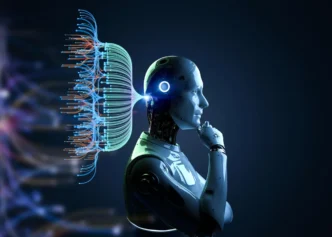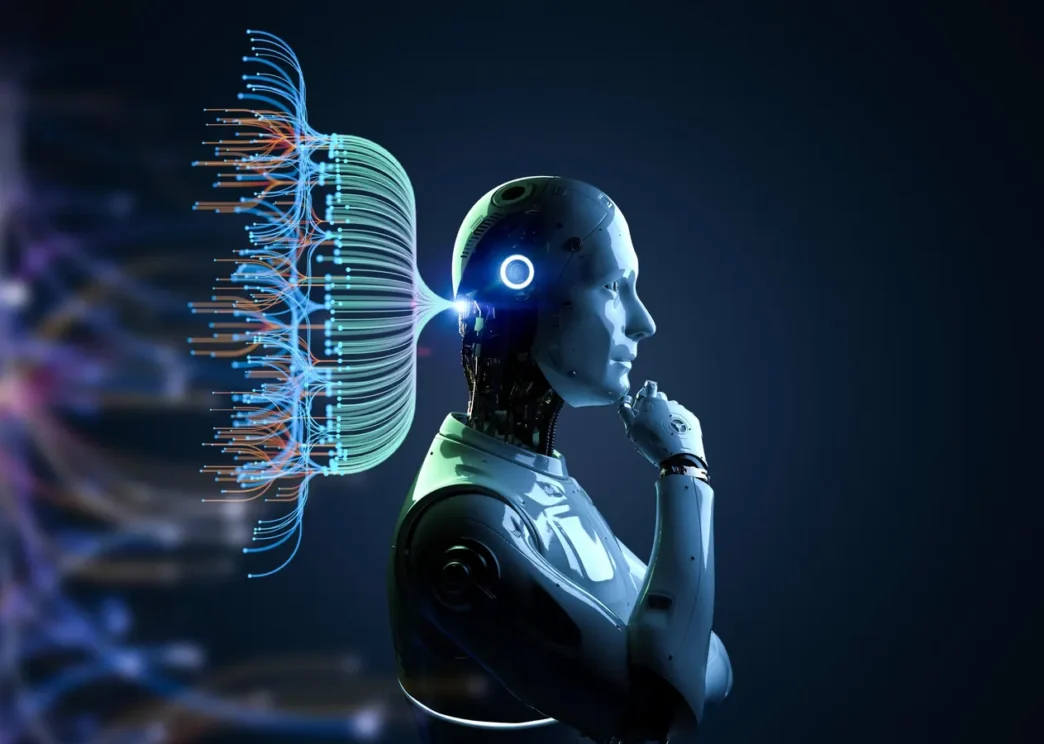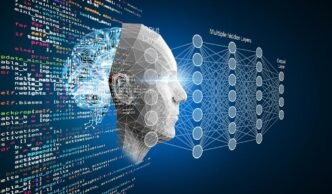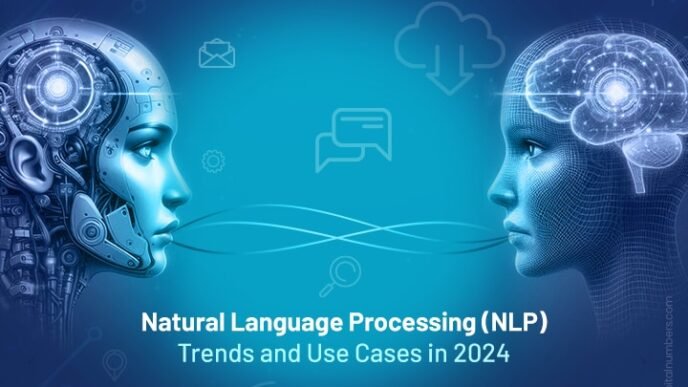In today’s rapidly evolving digital landscape, artificial intelligence (AI) has become a buzzword, often used in tech discussions, business strategies, and even everyday conversations. But what exactly is AI, especially in 2024? How does it work, and why is it so essential in the modern world? In this blog, we will explore the concept of AI, from its basic definitions to its advanced applications, and how it is shaping the future.
1. The Basic Definition of AI: Making Machines “Think” Like Humans
In the simplest terms, artificial intelligence refers to the ability of a machine to mimic human cognitive functions such as learning, reasoning, problem-solving, and decision-making. It’s like teaching computers to think and make decisions, much like humans do, but with the speed and accuracy that machines offer.
Here’s how you can think of AI:
•Imagine asking your phone’s voice assistant, “What’s the weather today?” Within seconds, it tells you the temperature, forecast, and even suggests carrying an umbrella. That’s AI at work—processing your request, understanding it, and giving you a useful response.
•Or think about when you shop online and get recommendations based on your previous purchases or preferences—that’s AI learning from your behavior and making tailored suggestions.
AI aims to build systems that can carry out tasks traditionally requiring human intelligence, but it goes far beyond just basic automation. AI systems are designed to continuously improve by learning from the data they process, a feature known as machine learning (ML).
2. Key Concepts Behind AI
To understand AI more deeply, we need to explore some foundational concepts that underpin modern AI systems:
•Machine Learning (ML): Machine learning is a subset of AI where computers are trained using large amounts of data to recognize patterns and make decisions without being explicitly programmed. It’s about learning from experience. For example, a self-driving car learns to recognize objects on the road (like pedestrians or traffic signs) by analyzing vast amounts of visual data.
•Deep Learning: A more advanced subset of machine learning, deep learning uses neural networks that mimic the structure of the human brain. These networks allow machines to perform even more complex tasks, like recognizing faces, translating languages, or diagnosing diseases from medical images.
•Natural Language Processing (NLP): NLP enables machines to understand, interpret, and respond to human language. This is what powers voice assistants like Alexa, Siri, or Google Assistant, as well as translation services and chatbots.
•Computer Vision: This is the ability of machines to interpret and make decisions based on visual input from the world. Think of facial recognition technology or the ability of autonomous cars to detect and respond to objects on the road.
3. The Evolution of AI: From Theory to Everyday Use
The concept of AI has been around for decades, with early researchers like Alan Turing theorizing about machines capable of thinking as early as the 1950s. The famous Turing Test, proposed by Turing in 1950, challenged the notion of whether a machine could exhibit intelligent behavior indistinguishable from that of a human. Over the years, AI has evolved significantly, moving from theoretical concepts to real-world applications.
In the 1980s, AI research focused on developing expert systems—programs designed to simulate the decision-making abilities of human experts in specific fields. However, the real leap in AI came with the rise of big data and improvements in computing power in the late 2000s. Suddenly, machines had access to massive datasets and the processing capability to analyze them at unprecedented speeds.
Fast forward to 2024, AI has become an integral part of our daily lives, from voice assistants and autonomous vehicles to advanced healthcare solutions and personalized marketing. In fact, a report by McKinsey & Company suggests that by 2030, AI could contribute up to $13 trillion to the global economy.
4. Modern Applications of AI in 2024
In 2024, AI is no longer confined to research labs or tech companies. It has infiltrated numerous industries, improving efficiency, enhancing user experiences, and solving problems that were previously unsolvable.
Here are some notable applications of AI today:
a. Healthcare
AI has revolutionized healthcare, from improving diagnostic accuracy to discovering new drugs. Deep learning algorithms can analyze medical images, such as X-rays or MRIs, faster and more accurately than human doctors. AI-powered tools can also help doctors predict patient outcomes or suggest personalized treatment plans.
For example, IBM’s Watson for Oncology is an AI tool that assists doctors in making evidence-based treatment decisions for cancer patients. In 2024, AI is also helping with early disease detection through wearable devices that monitor vital signs and alert patients to potential health issues before they become serious.
b. Autonomous Vehicles
Self-driving cars are one of the most exciting AI applications. Companies like Tesla, Google’s Waymo, and traditional car manufacturers are investing heavily in AI to develop fully autonomous vehicles. These cars use a combination of machine learning, computer vision, and sensors to navigate, make decisions, and avoid obstacles on the road without human intervention.
In 2024, autonomous vehicles are being tested in multiple cities worldwide, and while fully driverless cars for the masses are still in the development stage, we’re closer than ever to realizing this futuristic vision.
Chatbots and virtual assistants powered by AI are becoming the first line of customer service for many companies. Using NLP and machine learning, these AI systems can handle routine inquiries, resolve issues, and provide product recommendations without the need for human agents.
A Gartner report suggests that by 2024, 80% of customer service interactions will be managed by AI, allowing businesses to offer faster and more efficient customer support.
d. Finance
AI is transforming the finance industry through algorithms that predict stock trends, analyze risks, and detect fraud. AI-powered robo-advisors provide personalized investment advice based on an individual’s financial goals and risk tolerance.
Additionally, in 2024, financial institutions are using AI to prevent fraud by analyzing millions of transactions in real-time, identifying unusual patterns, and blocking potentially fraudulent activities before they occur.
e. Retail and E-commerce
AI has greatly improved the retail experience through personalization. From recommending products to optimizing supply chain logistics, AI helps retailers understand consumer behavior, forecast demand, and streamline operations.
For instance, companies like Amazon use AI to make personalized product recommendations based on your browsing and purchase history. AI also powers automated warehouses, where robots work alongside humans to speed up order fulfillment.
5. The Challenges and Ethical Considerations of AI
As AI continues to grow, it also raises important questions about ethics, fairness, and societal impact.
a. Data Privacy
AI systems often rely on massive datasets, which include personal information. Concerns about how this data is collected, stored, and used have led to debates around data privacy and security. Ensuring AI systems handle data ethically and comply with regulations like the General Data Protection Regulation (GDPR) in Europe is essential.
b. Job Displacement
Automation through AI is expected to replace certain jobs, particularly in manufacturing, retail, and administrative roles. According to a study by the World Economic Forum, AI and automation could displace 85 million jobs by 2025, while creating 97 million new roles. The challenge lies in reskilling workers for the jobs of the future.
c. Bias in AI
AI systems can inherit biases present in the data they are trained on, leading to unfair outcomes in areas such as hiring, lending, and criminal justice. Ensuring that AI models are transparent, fair, and free of bias is a critical issue that researchers and policymakers are working to address in 2024.
6. The Future of AI: What to Expect by the End of 2024
AI technology is advancing at an astonishing pace, and by the end of 2024, we can expect several new breakthroughs:
•Increased Adoption of AI in Healthcare: AI will play a more significant role in early diagnosis, telemedicine, and personalized treatment plans, potentially saving millions of lives.
•Wider Use of AI in Education: AI-powered personalized learning platforms will become more common, adapting to the needs of individual students and providing real-time feedback to improve learning outcomes.
•Advances in AI Ethics and Governance: As AI becomes more integrated into society, governments and organizations will continue developing frameworks and regulations to ensure its responsible use.
•AI in Creative Industries: Expect to see AI-generated content, from art to music to literature, becoming more sophisticated, blurring the line between human and machine creativity.
7. Conclusion: AI’s Impact on Everyday Life
In 2024, AI is not just a futuristic concept—it’s a transformative technology shaping the world around us. From enhancing healthcare and revolutionizing transportation to improving customer service and personalizing the shopping experience, AI is becoming an integral part of our daily lives.
However, with these advancements come challenges, from ensuring data privacy to addressing ethical concerns. As AI continues to evolve, it holds the promise of improving life across multiple sectors, but it’s crucial that we navigate this technological frontier with care, responsibility, and foresight.












